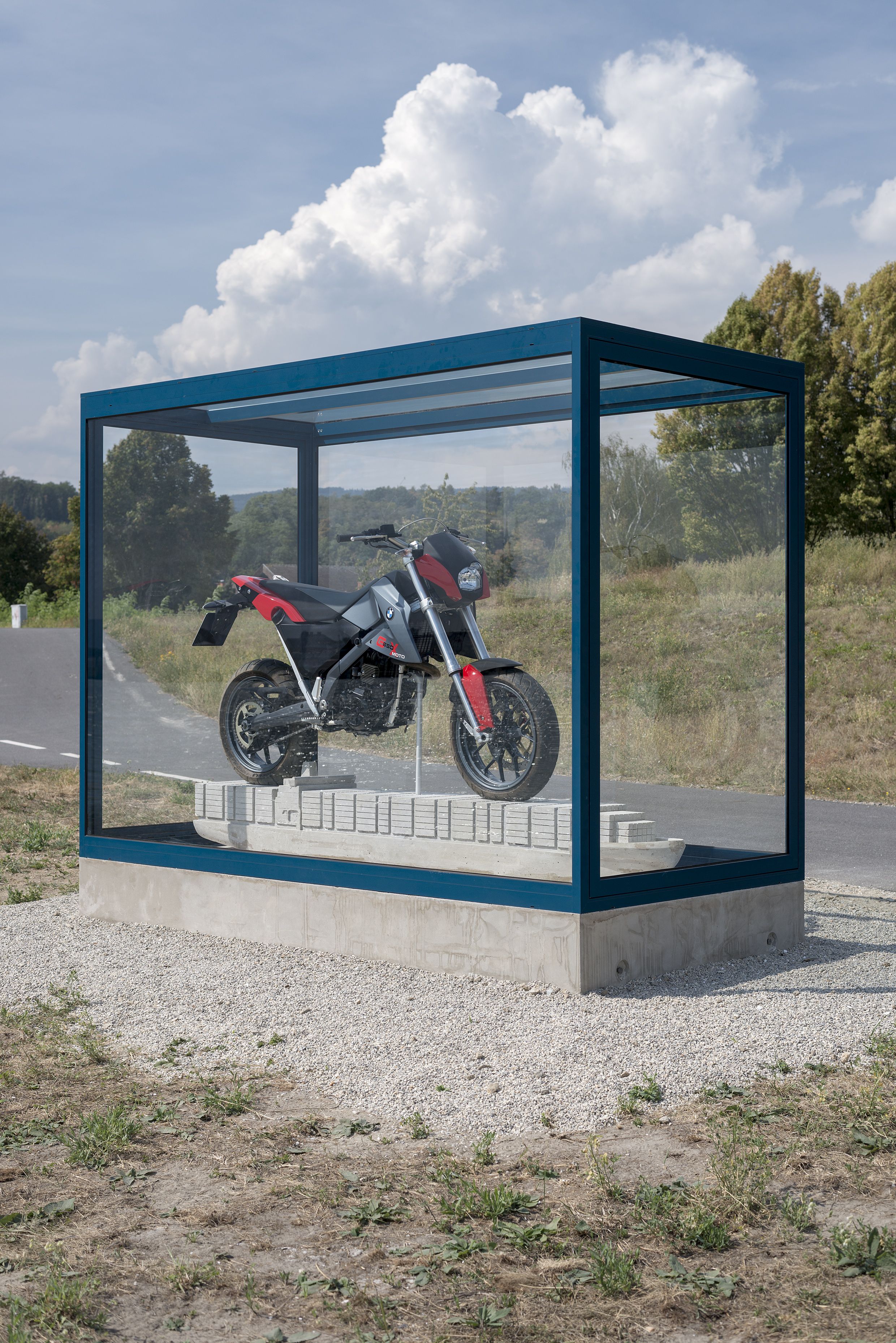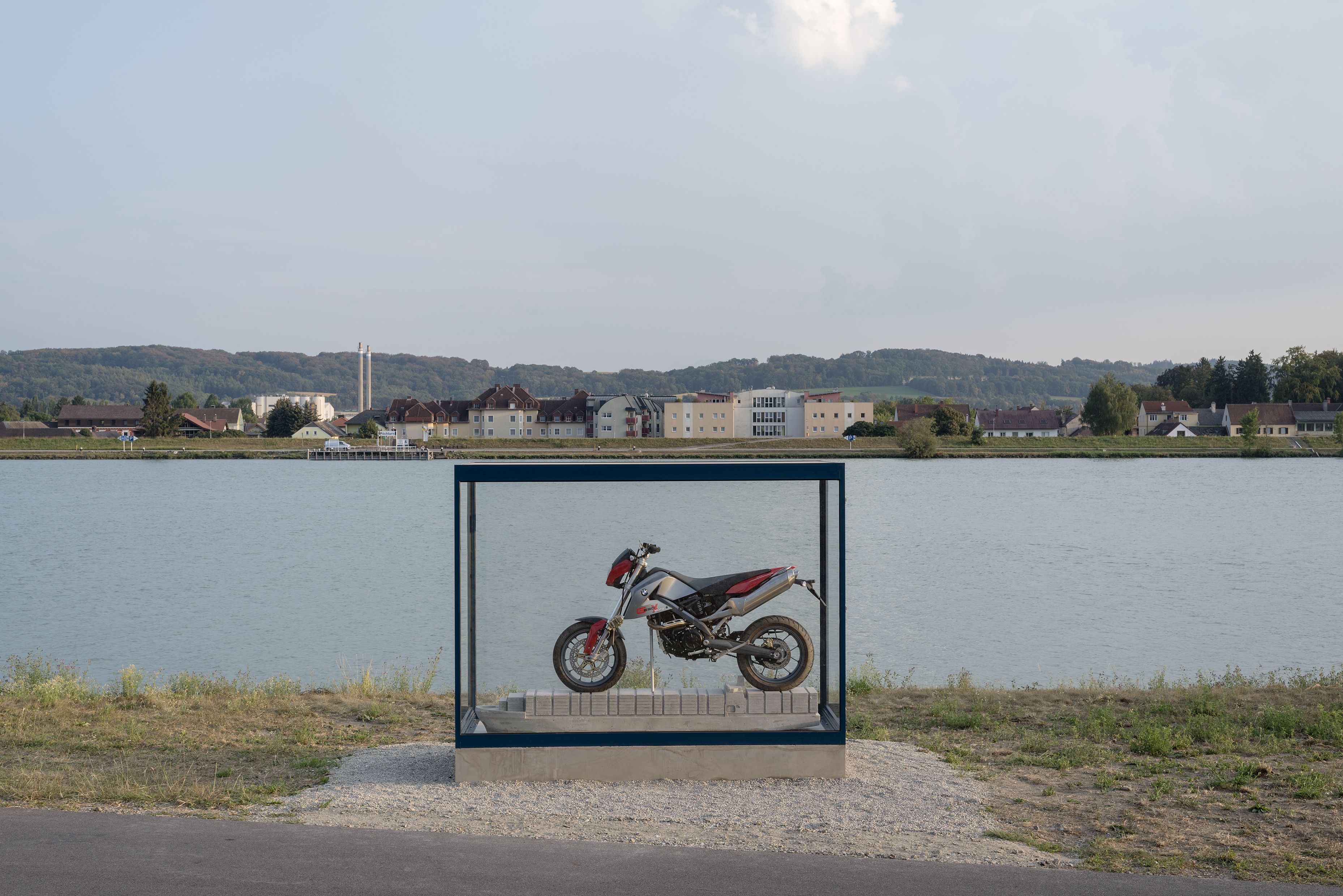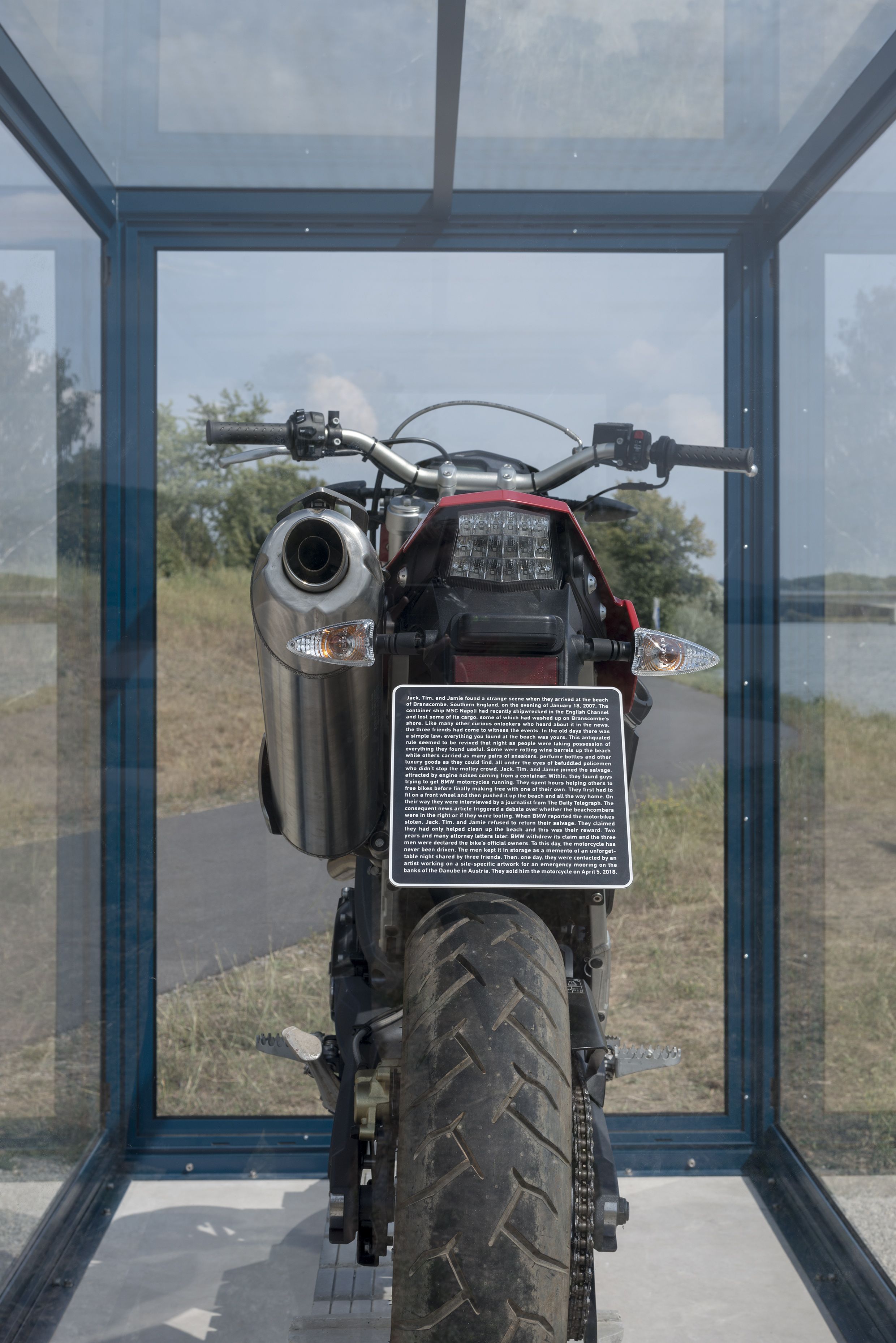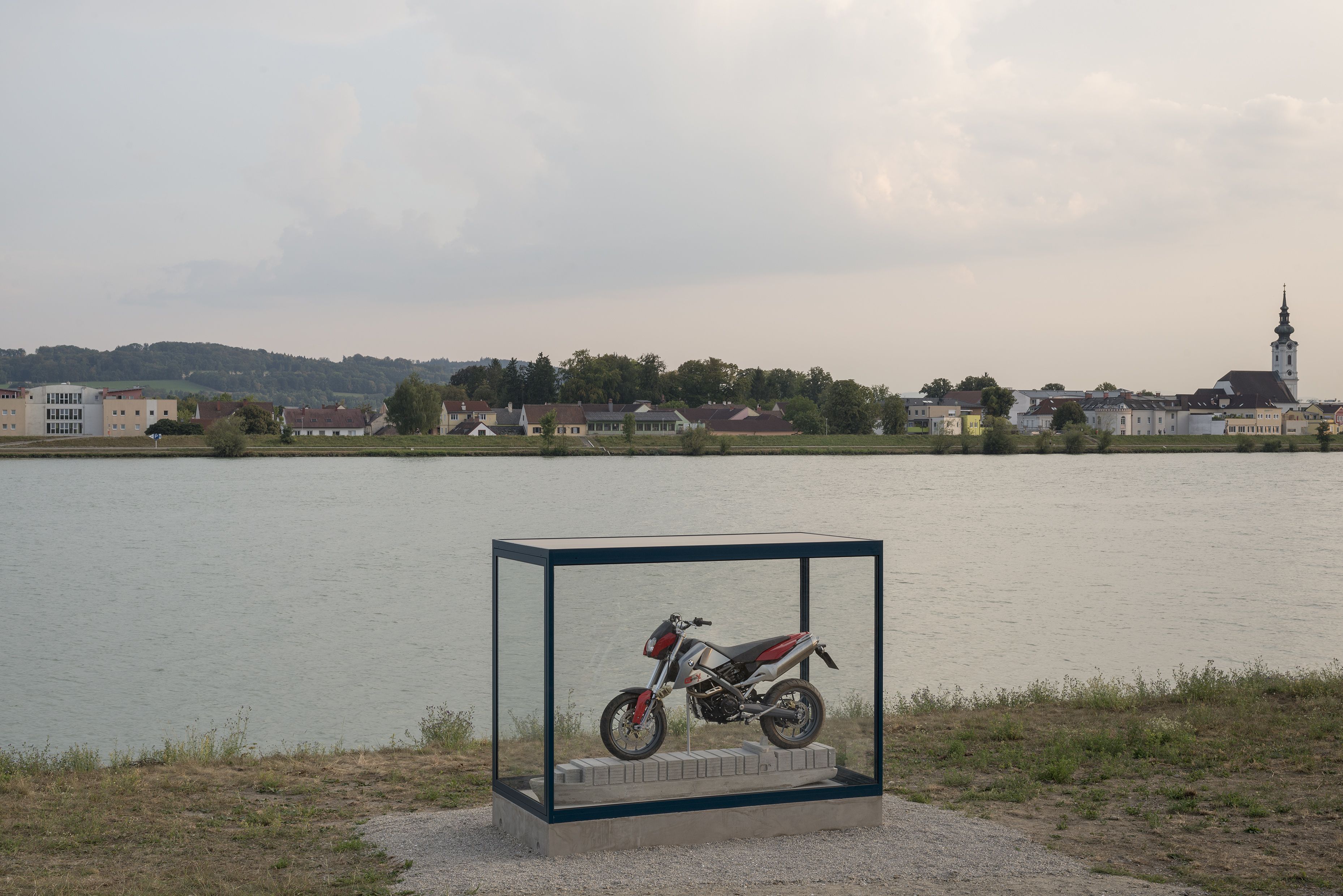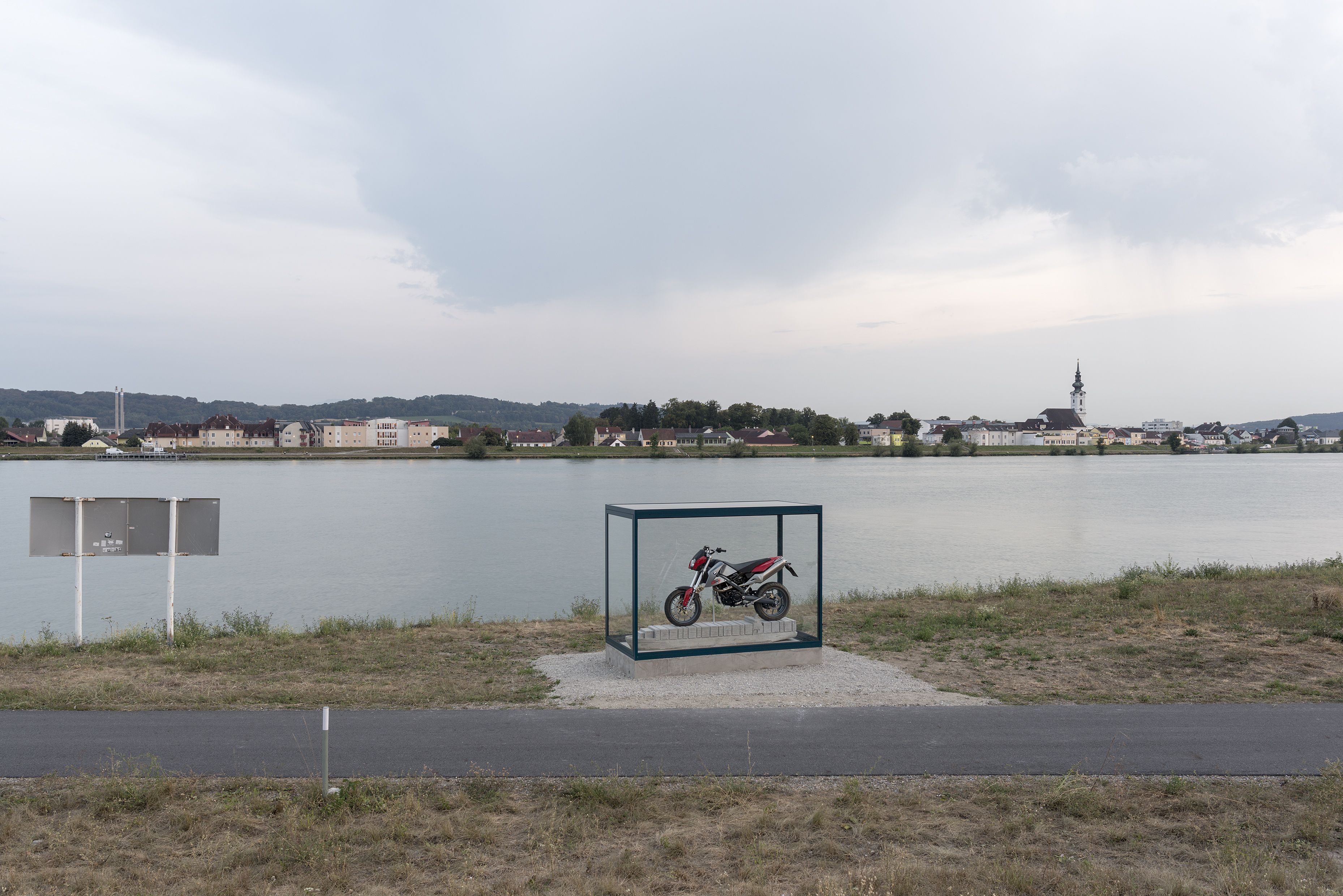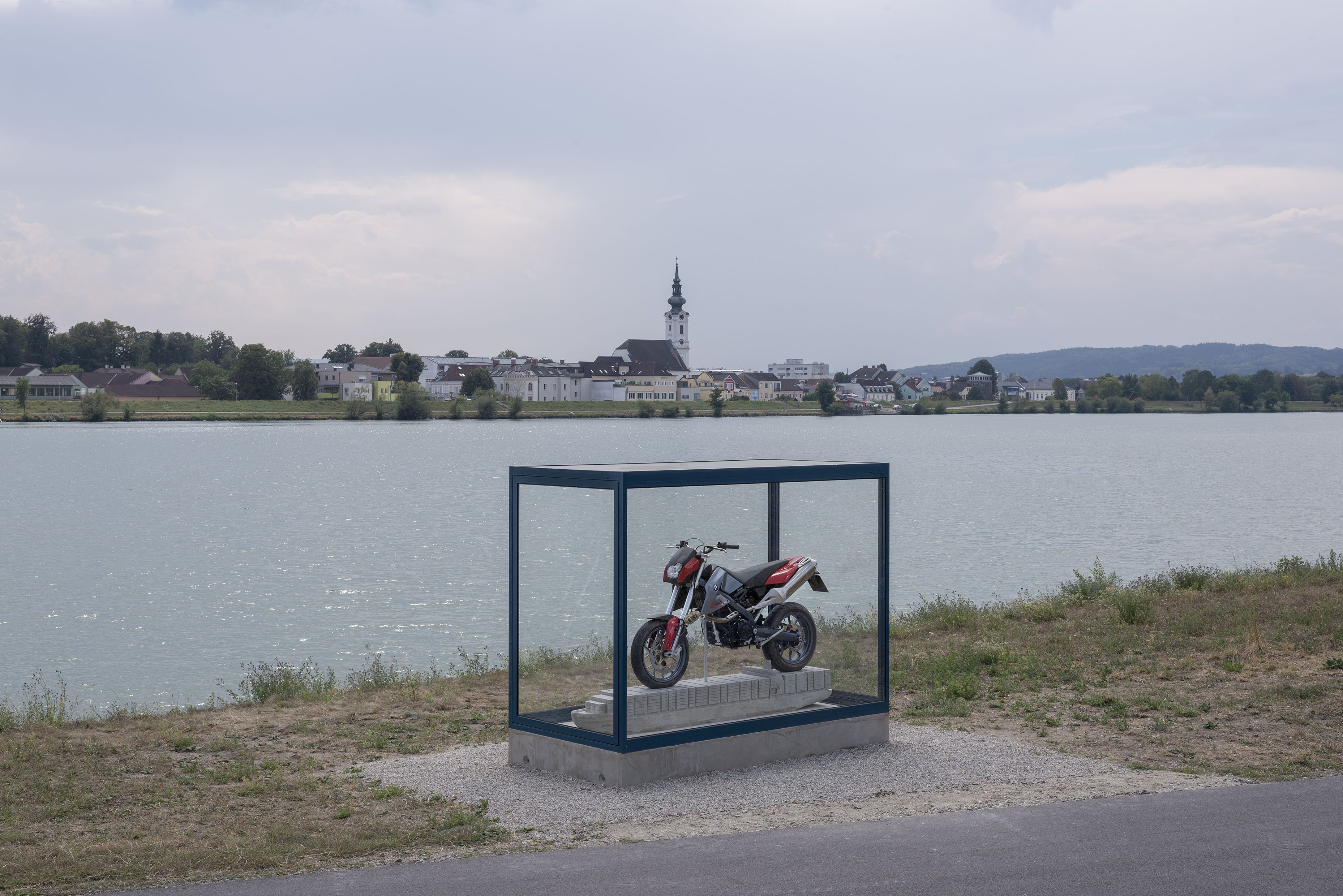Christian Kosmas Mayer
:
Cycles Galore!
Back
Information
Christian Kosmas Mayer’s conceptual artistic works present a single or several objects discovered through intense research that act as a kind of pars pro toto representing complex economic, social, or political contexts. Although these objects may not comprehensively portray the contexts of which they are the end-results and products, they are still able to address them within a historical as well as current narrative.
In the artist’s work Cycles Galore ! , an original BMW motorcycle inside a glass showcase placed at an emergency mooring area on the banks of the Danube, where ships can stop if they are in trouble. The work stands on a plinth with contours modelled after the container vessel MSC Napoli, which ran into difficulties in the English Channel on January 18, 2007, during storm Kyrill. As a result, at least 200 containers went overboard near Devon in Cornwall on the southern coast of England. Two days after this occurrence, there began to be reports that some of the cargo had been washed onto the shore near the town of Branscombe. This news of the flotsam attracted onlookers, who began to scavenge in increasingly large numbers. When the situation started getting out of control – an official report about the situation described systematic plundering – the beach was declared a crime scene and the local authorities began to investigate. Prior to this, the local police had informed the public that anyone who recovered flotsam had to declare retrieved goods within 28 days and were allowed to keep them as long as the rightful owner could not be found. According to a report by the BBC about the legal situation, people from all over the south of England came to Branscombe. Images in the media showed men transporting barrels of wine with a row boat, collecting sneakers, and rummaging through soggy cardboard boxes in the containers. One photo became especially famous and shows three young men, posing with a motorcycle they found on the beach. In an interview with the Daily Telegraph , they talked about their find during the so-called “Branscombe Beachcombing,” and their names were printed as well. This caught the company BMW’s attention, who manufactured the motorcycle, and it issued a claim of ownership. What followed was a lengthy legal battle between the two parties until the international company finally shelved the lawsuit and caved in to the stubborn men, who were not intimidated by the legal consequences.
Mayer became fascinated by this ownership conflict regarding the flotsam, as well as the question of appropriation and theft and the dissonance between local event and global corporate logistics. He found one of the owners of the motorcycle, bought it, and mounted it at the emergency mooring station on the Danube. It now represents not only the complicated ownership structures of global trade, but also the flowing currents of globalization – a dense network of goods and money constantly in motion. Washed up overseas containers like those from the MSC Napoli represent isolated disturbances in the system of the international circulation of goods. They are outliers in which local and global aspects become intertwined in the wrong way and legally guaranteed ownership rights fail in the anarchy of the moment. Normally, the network of worldwide trade disappears behind the cartography of maritime landscapes and only surfaces when a wrench is thrown into the cogs. In this light, Mayer’s work represents a mistake in the system. The motorcycle stands for the certainty of facts: Like a piece of evidence, it is part of a narrative that is not limited to a container vessel in trouble in the English Channel. Rather, it speaks more fundamentally of a globalized economy and of how this defines the relationship between near and far, between local piracy and international trade law. As such, the motorcycle in the showcase is a mere paradoxical footnote in a grander story.
Images (6)

